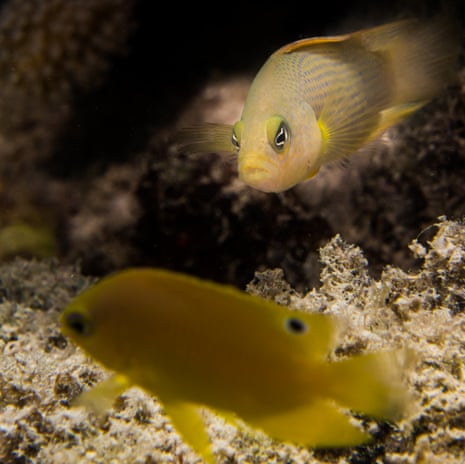A “cloak of noise” produced by motor boats is making small fish easy prey for predators, according to the first study to show noise pollution in the seas can have a direct impact on fish survival.
The research, on Australia’s Great Barrier Reef, showed predator fish gobbled up twice as many prey when motor boats were nearby, compared to when the natural noises of the reef were the only sound.
Earlier research has shown manmade noise in the oceans can affect communication and hunting by marine animals. “But this was about life or death,” said Steve Simpson, at the University of Exeter, UK, who led the international research team.
“Noise is yet another [manmade] problem for the oceans, but it is one we can solve more easily than things like climate change,” said Simpson. “If we can take one of the stressors out of the equation, we can give fish one less thing to worry about.”
The research, published in Nature Communications, took place at Lizard Island and examined how the rumble of outboard motors affected young ambon damselfish, which are eaten by dusky dottybacks.
As well as doubling the number of damselfish devoured, the team discovered that motor boat noise increased stress levels in the fish by 33%. The scientists also found the noise made damselfish six times less likely to “startle” and dart away when a predator made its move. Even when they did startle, they were 22% slower. The study was the first to use real motor boats to provide the noise, rather than the recordings usually used in research.
“In this case, the motor boats spell death for the young fish,” said Simpson. He thinks two factors - distraction and stress - are the most likely reason, with both probably playing a role.
The motor noise distracts the damselfish, so they take less notice of the dottybacks. “Under the cloak of noise, the predator is winning,” Simpson said. The stress caused by the noise alters the damselfishes behaviour, he said: “It can cause fish to respond [to attacks] in the wrong ways. If you think of people, when we are stressed we often do crazy things.”
“In this case, we think the prey fish are more susceptible to noise than the predator fish, but that might be the other way around in other cases,” he said.
Two-stroke outboard motors are extremely common on most coasts with, for example, 12m registered motor boats in the US alone. But, compared to climate change, ocean acidification, pollution and overfishing, cutting noise pollution is easier to deal with in principle.
Simpson said there could be marine quiet zones, where motor boats are excluded or have to use quieter motors. Four-stroke motors are quieter and electric motors are getting more powerful and are much quieter, he said.
Mark Meekan, at the Australian Institute of Marine Science and part of the research team, said: “If we can reduce the effect of local noise pollution, we can build greater resilience in reef communities to looming threats such as global warming.”

Comments (…)
Sign in or create your Guardian account to join the discussion